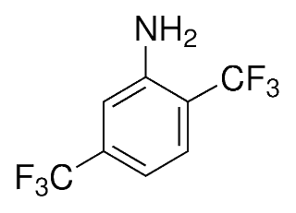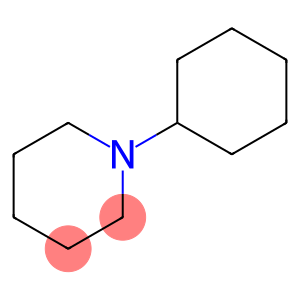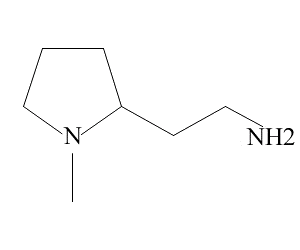2 5-Bis(trifluoromethyl)aniline(CAS# 328-93-8)
| Risk Codes | R20/21/22 – Harmful by inhalation, in contact with skin and if swallowed. R36/37/38 – Irritating to eyes, respiratory system and skin. |
| Safety Description | S26 – In case of contact with eyes, rinse immediately with plenty of water and seek medical advice. S36/37/39 – Wear suitable protective clothing, gloves and eye/face protection. S45 – In case of accident or if you feel unwell, seek medical advice immediately (show the label whenever possible.) S36 – Wear suitable protective clothing. |
| UN IDs | 2810 |
| WGK Germany | 3 |
| HS Code | 29214990 |
| Hazard Note | Toxic/Irritant |
| Hazard Class | 6.1 |
| Packing Group | III |
Introduction
2,5-bis(trifluoromethyl)aniline is an organic compound with the chemical formula C8H6F6N. The following is a description of its nature, use, preparation and safety information:
Nature:
1. Appearance: 2,5-bis(trifluoromethyl)aniline is colorless to light yellow crystal.
2. Melting Point: its melting point range of 110-112 ℃.
3. Solubility: It is almost insoluble in water, but relatively soluble in organic solvents such as ethanol and ether.
Use:
1. 2,5-bis(trifluoromethyl)aniline is commonly used as an intermediate in organic synthesis.
2. It is used to synthesize compounds with biological activity.
3. In some fields, such as medicine and materials science, it is also used as a reagent for pharmaceutical analysis and material surface modification.
Method:
2,5-bis(trifluoromethyl)aniline can be prepared by reacting aniline with trifluoromethyl alcohol. The reaction conditions are generally at room temperature in a non-aqueous solvent.
Safety Information:
1. The toxicity of 2,5-bis(trifluoromethyl)aniline is low, but as a chemical, it is still necessary to pay attention to safe operation.
2. It may be irritating to the skin, eyes and respiratory tract, so wear appropriate protective equipment when using.
3. In storage and handling, should avoid contact with fire and flammable materials.
4. Carefully read and follow the safety guidelines provided in the relevant chemical Safety Data Sheet (MSDS) before use.
Please note that when using any chemicals, you should follow the correct operating procedures and ensure that it is carried out in a safe experimental environment.



![6aH-Cyclohepta[a]naphthalene(CAS#231-56-1)](https://www.xinchem.com/uploads/6aH-Cycloheptaanaphthalene.gif)

![2,9-diazabicyclo[4.3.0]nona-2,4,7,10-tetraene-7-carbaldehyde)(CAS#4649-09-6)](https://www.xinchem.com/uploads/tetraene.png)


